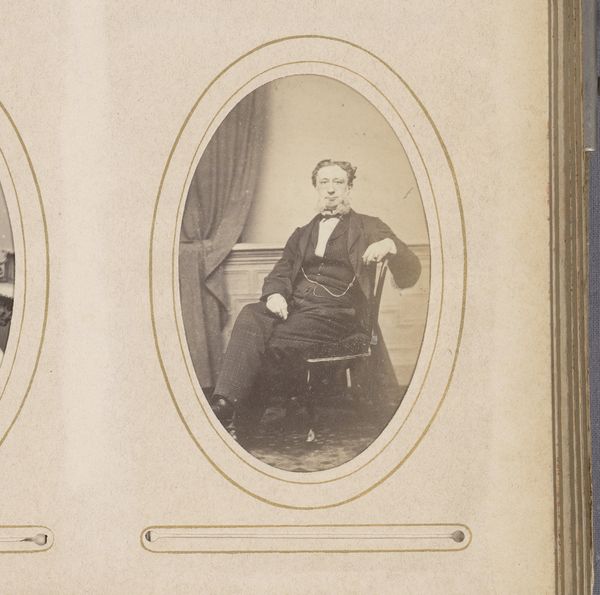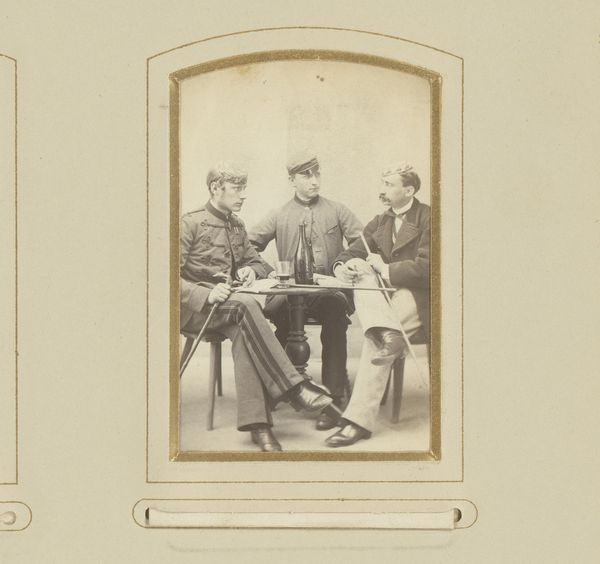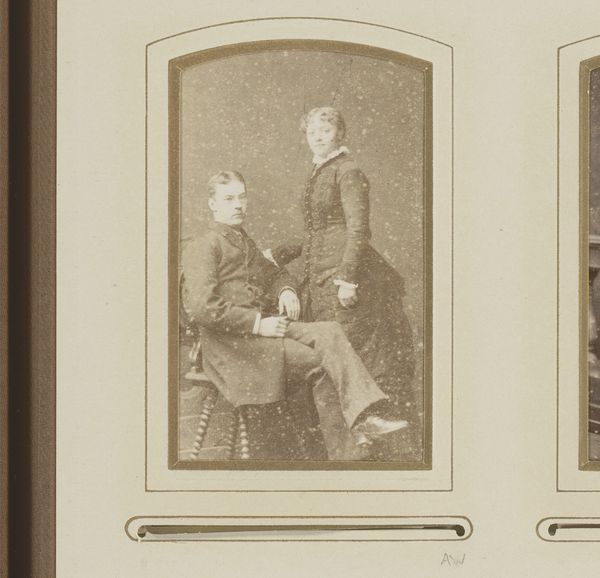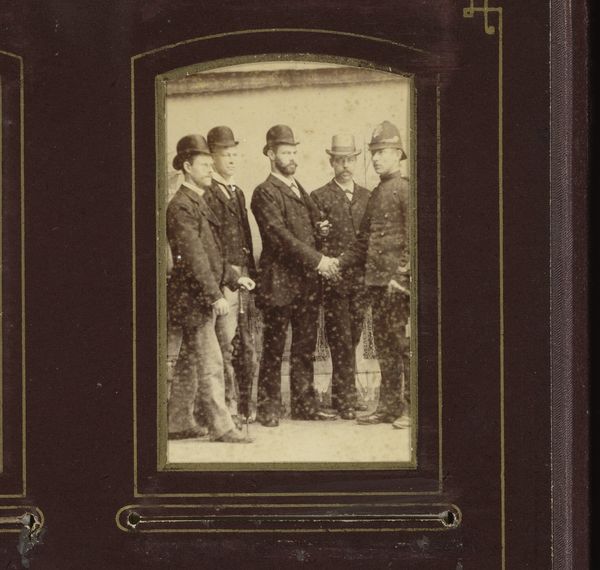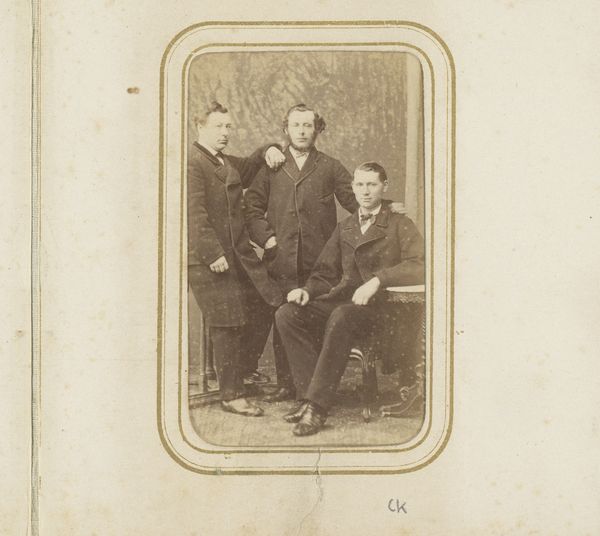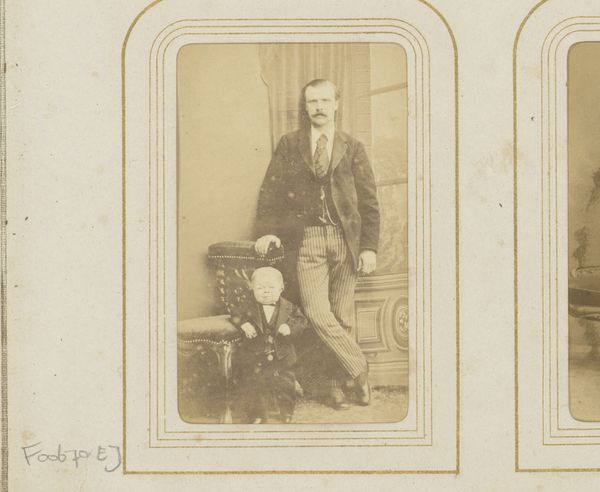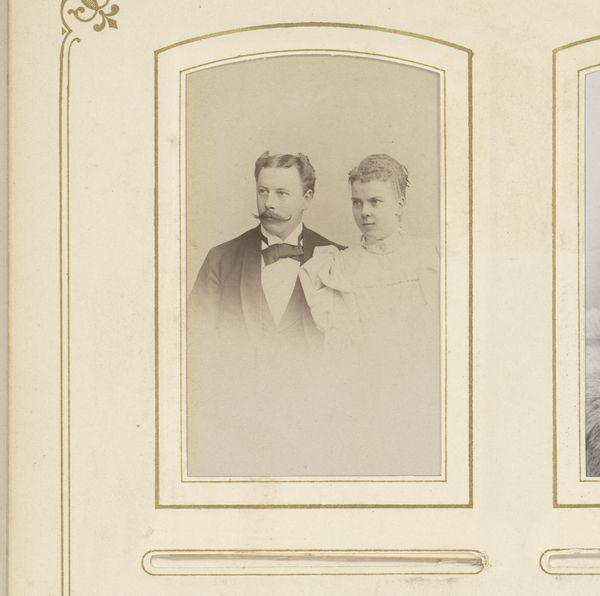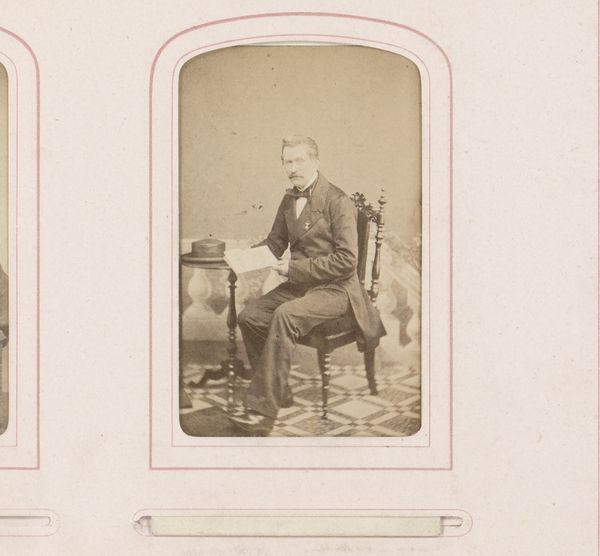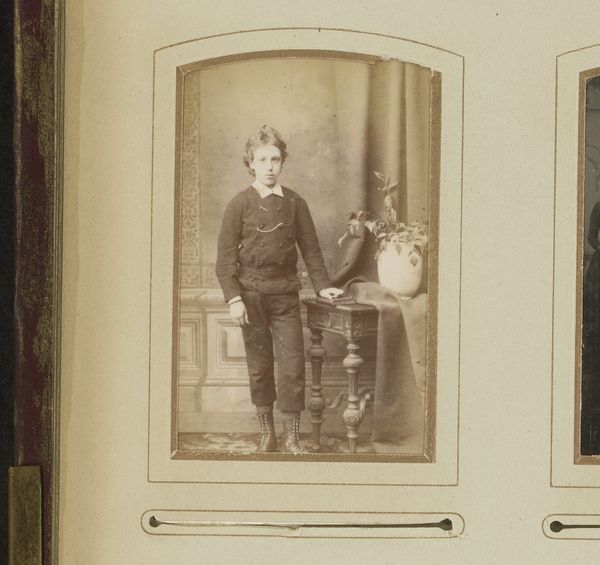
#
aged paper
#
vintage
#
photo restoration
#
photo element
#
parchment
#
archive photography
#
historical photography
#
old-timey
#
19th century
#
golden font
Dimensions: height 81 mm, width 52 mm
Copyright: Rijks Museum: Open Domain
Carl Borntraeger created this small photographic print, “Portret van een vrouw en man in treinwagon”, using the wet collodion process. The image is mounted onto card stock and housed within an oval frame, itself suggestive of painted portrait miniatures, while also capturing a decisive moment in the history of transportation. The wet collodion process involved coating a glass plate with chemicals, exposing it in a camera while still wet, and then developing the image immediately. This required skill and speed, but it allowed photographers to produce detailed images on glass negatives. The sepia tone results from the chemical development, lending the photo a nostalgic, timeless quality. The subjects, dressed in their finery, appear self-conscious in this new kind of mobile space. This is a reminder that photography, like the railways themselves, was once a cutting-edge technology reshaping social life and our perception of time and space. Examining the material and its process helps us appreciate how even seemingly straightforward images are deeply embedded in technology, labor, and society.
Comments
No comments
Be the first to comment and join the conversation on the ultimate creative platform.

